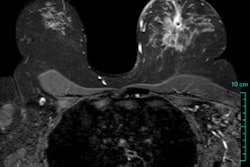There's good, there's bad, and there's ugly in two final rules for 2008, published November 1 in the Federal Register by the U.S. Centers for Medicare and Medicaid Services (CMS). While radiology has some small victories, CMS declined to tackle the thorny issue of in-office physician self-referral in publishing the new Medicare Physician Fee Schedule (MPFS) and Hospital Outpatient Prospective Payment (HOPPS) rules, which take effect January 1, 2008.
The good
The MPFS final rule has a number of positive provisions, including some that address performance standards and conditions, according to Tom Greeson, a partner at law firm Reed Smith of Falls Church, VA. For example, independent diagnostic testing facilities (IDTFs) will not be allowed to share space or equipment with any other Medicare-enrolled individual or entity, including radiology groups.
IDTFs located somewhere other than a hospital building may no longer enter into any type of arrangement with a physician, physician practice, or other entity that involves subleasing the IDTF's office space or imaging equipment to a radiology group to perform interventional procedures; subleasing the IDTF's office space or imaging equipment so that a referring physician practice can establish an office location in the building; or offering block-time lease arrangements of the IDTF's office space and imaging equipment to physician practices.
Also under this final rule is an anti-markup provision, which states that an imaging center's charges to a physician practice cannot be billed to Medicare for amounts greater than the MPFS, the actual charge, or the net actual charge, effectively taking the profit out of the professional component, Greeson said. Referring-physician group contracts for interpretation services and those provided remotely for Medicare patients also cannot be marked up.
Also positive in the final MPFS rule is an increase in radiology's practice expense per physician hour, from $174 to $204, and a decision not to implement any changes in the equipment utilization or interest rates in the practice expense methodology until there are further data to justify these changes.
"Any adjustments to the practice expense methodology formula have a huge effect on the technical component for procedures that are equipment-intensive across all of medicine," said Pam Kassing, senior director of economics and health policy for the American College of Radiology (ACR) in Reston, VA. "So Medicare has decided in this rule not to change anything about it at all. They know it's a sensitive formula that could be devastating if it were randomly changed."
The bad
On the physician fee schedule side, the 2008 final rule includes a 10.1% cut in the conversion factor for physician-related services under the sustainable growth rate (SGR) formula, which will take effect in January unless Congress passes legislation this session that negates or offsets the cut.
This cut is particularly high this year, which again highlights the increased use of medical imaging, since cuts are enforced when real growth outstrips projected growth: for the past five years, the percentage cut has been more like 4.5% to 5%, according to Kassing.
On the HOPPS side, CMS estimates that hospitals will receive an overall average increase of 3.8% in Medicare payments for outpatient services in calendar year 2008. The reforms within this final rule will promote efficiencies within the HOPPS payment structure by providing larger payment bundles for certain HOPPS services, CMS said.
But the bad news is that CMS is expanding its packaging approach to include guidance, image processing, intraoperative, and imaging supervision and interpretation services, as well as diagnostic radiopharmaceuticals, contrast agents, and observation services. These services will be packaged into larger payment bundles.
The rule also includes composite ambulatory payment classification (APC) groups, which CMS expects will encourage efficient healthcare by providing a single bundled payment for several major services: For example, CMS will provide payment for extended outpatient visits with observation care through two composite APCs, and will use composite APCs to pay for low-dose-rate prostate brachytherapy and cardiac electrophysiologic evaluation and ablation services.
"We're not happy at all about the packaging," Kassing said. "These are huge changes and Medicare hasn't provided any impact analysis to assess how they will affect radiology. Instead, they're moving forward on packaging almost all of interventional radiology."
The ugly
To the surprise and frustration of many, CMS has once again delayed its decision on whether to change the status quo for physician self-referral of imaging services in the Medicare Physician Fee Schedule.
The agency said that it will address the following proposals, among others, that pertain to physician self-referral in yet another future rule:
- Burden of proof
- Obstetrical malpractice insurance subsidies
- Unit-of-service (per-click) payments in lease arrangements
- The period of disallowance for noncompliant financial relationships
- Ownership or investment interests in retirement plans
- "Set in advance" and percentage-based compensation arrangements
- "Services furnished" arrangements
CMS has also permitted to stand the so-called "in-office ancillary service exception" to the anti-self-referral Stark II law -- a clause that allows physicians to legally self-refer patients for imaging in their own offices and bill Medicare under their group practice number under certain conditions. The exception has fostered imaging arrangements designed to slip through the loophole.
"We're disappointed that Medicare is going to wait and publish another rule in the future addressing these issues," Kassing said. "The issue of physician self-referral has been well-vetted through two public comment periods, and it's time to resolve it."
But CMS hasn't abandoned the Stark II issue, according to Greeson.
"CMS has received so many comments that it hasn't had the time to process all of them," he said. "I'm confident that we'll see another round of final rule-making, and it will be before next year's fee schedule changes."
Do these final MPFS and HOPPS rules affect each other? Most likely, Greeson said.
"This HOPPS rule is a concern for radiologists, in that any reduction in payments under HOPPS can mean reductions in payment under the MPFS, because according to the Deficit Reduction Act, physicians are paid the lesser of the fee schedule rate or the HOPPS rate," Greeson said. "The final HOPPS rule could result in cuts to the technical component for radiologists."
As the connection between the Deficit Reduction Act of 2005 and the HOPPS and MPFS payment systems becomes clear, the ACR has called for CMS to foster openness of communication with all affected, Kassing said.
"In our comments on the HOPPS proposed rule, we asked CMS to be open and honest about whether changes in one payment system affect another because of the DRA or other legislation," Kassing said.
By Kate Madden Yee
AuntMinnie.com staff writer
November 7, 2007
Related Reading
CMS publishes 2008 physician payment rule, November 4, 2007
CMS proposes hike in cardiac PET reimbursement, October 19, 2007
New CMS rules could add to radiology's reimbursement woes, August 1, 2007
CMS releases 2008 HOPPS proposed rule, July 19, 2007
CMS proposes to cut rates in 2008 MPFS, July 3, 2007
Copyright © 2007 AuntMinnie.com




















